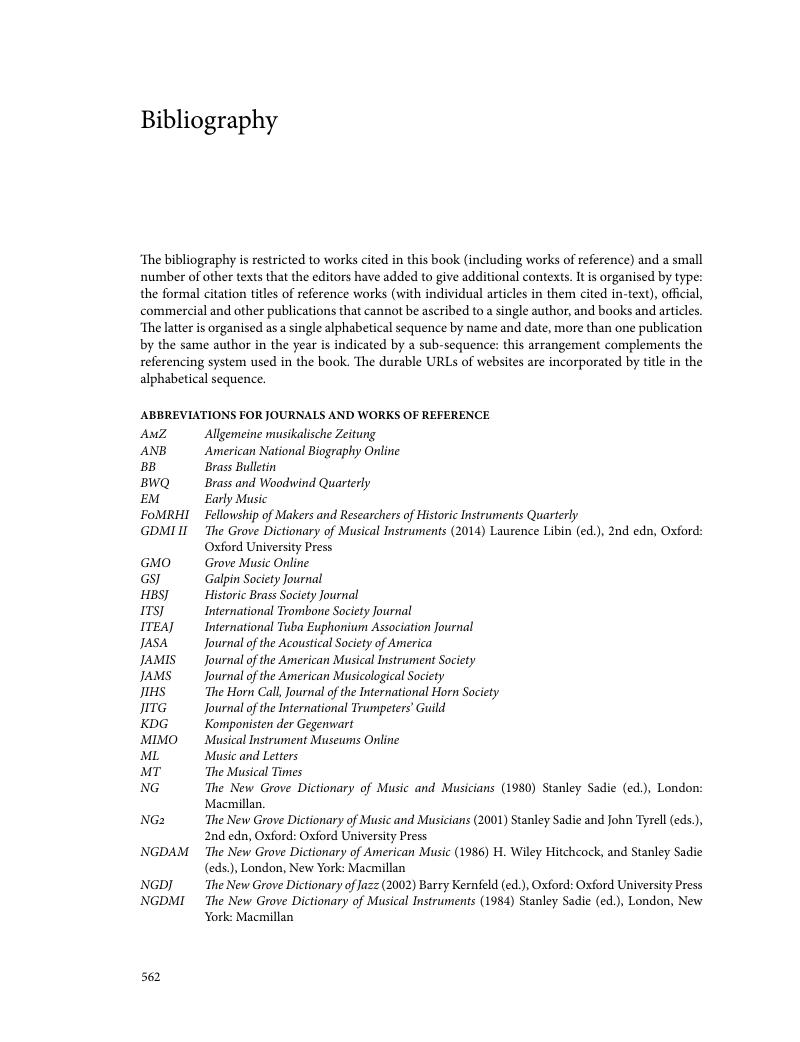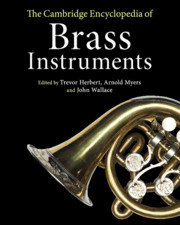Book contents
- The Cambridge Encyclopedia of Brass Instruments
- The Cambridge Encyclopedia of Brass Instruments
- Copyright page
- Contents
- Figures
- Tables
- Contributors
- Guide to Using the Encyclopedia
- Acknowledgements
- Introduction: Understanding Brass Instruments
- Dictionary
- Dictionary
- Book part
- Bibliography
- Index
- References
Bibliography
Published online by Cambridge University Press: 31 October 2018
- The Cambridge Encyclopedia of Brass Instruments
- The Cambridge Encyclopedia of Brass Instruments
- Copyright page
- Contents
- Figures
- Tables
- Contributors
- Guide to Using the Encyclopedia
- Acknowledgements
- Introduction: Understanding Brass Instruments
- Dictionary
- Dictionary
- Book part
- Bibliography
- Index
- References
Summary

- Type
- Chapter
- Information
- The Cambridge Encyclopedia of Brass Instruments , pp. 562 - 595Publisher: Cambridge University PressPrint publication year: 2018



